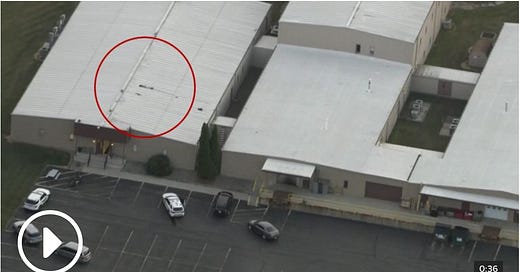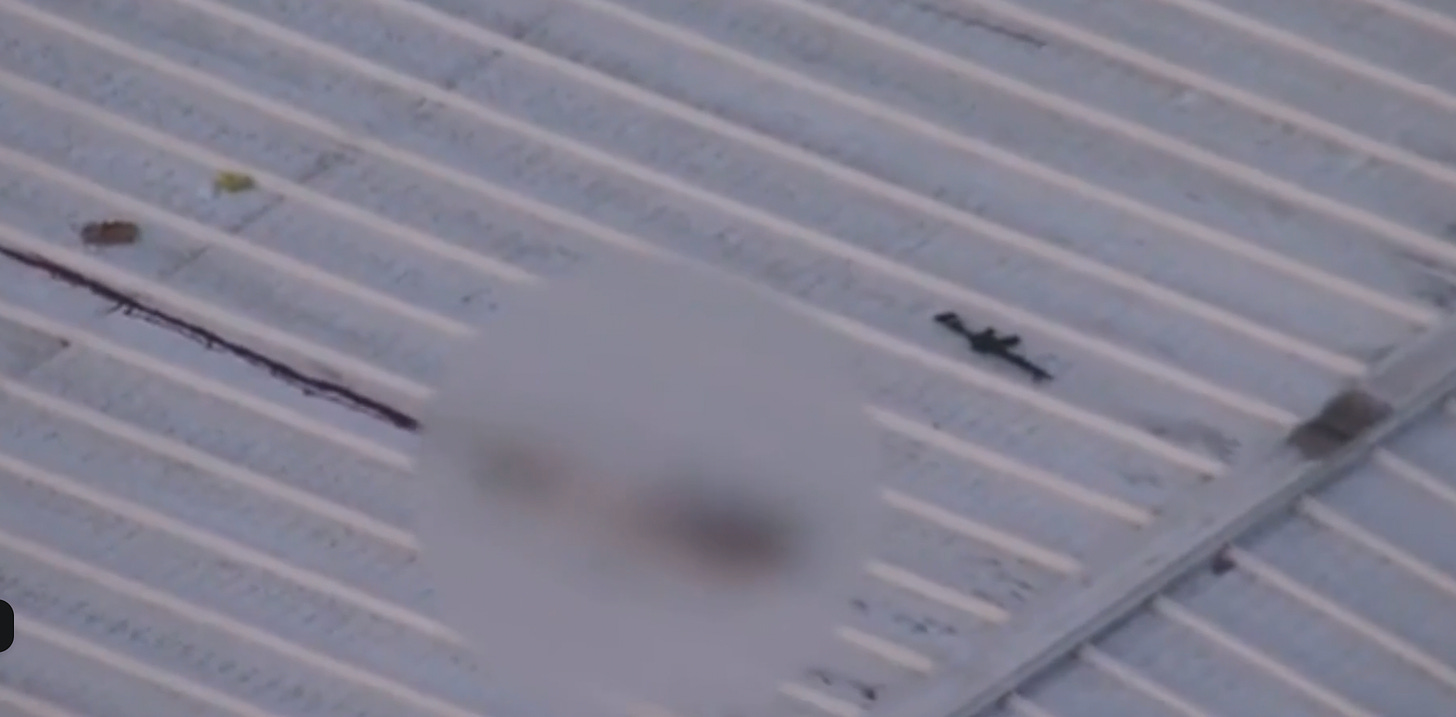Puzzling Features of Crooks Crime Scene
Did Crooks toss his rifle aside? If so, was he hoping that counter-snipers would refrain from shooting him to preserve him as a witness?
The following still images from aerial video footage of the dead would-be assassin on the rooftop strike me as puzzling.
Note the large flow of blood downslope of his body in the following closeup. The position of his body marks the position at which he was shot in the head.
I initially wondered if if the photo was taken after law officers checked Crooks’s body to make sure he was dead, then separated the weapon from his body, and then left the scene. Perhaps initial responders were told to leave the roof to minimize contamination of the crime scene, and to wait in the parking lot below for the coroner and crime scene investigators to arrive.
However, I still believe it is worth trying to ascertain if it was Crooks who tossed the weapon far to his left after he finished shooting and before he was shot. A video filmed by a bystander on the ground and published by TMZ captured Crooks’s final seconds (scroll down to third video on page). Due the camera angle, it’s difficult to say from this perspective how far Crooks is from the ridge, but he had to have been sufficiently close to it to aim the rifle down the opposite slope.
After firing a rapid burst—with bystanders screaming at the top of their lungs, apparently trying to call attention to law officers—about ten seconds elapse, and one of the bystanders can be heard saying, “He’s turning this way, be careful,” at which point can be heard the distant snap of a rifle, and then the same voice says, “Oh, he’s down.” Judging by this tape, about 12 seconds elapsed between Crooks’s burst of shots and the counter-sniper shot that killed him.
In the post-mortem aerial video, Crooks’s body is positioned a few feet down from the roof’s ridge. Using the rifle in the same photo for an approximate scale, his head appears to be lying between 3 and 5 five feet from the ridge. This suggest that he was trying to crawl in reverse, back down the roof, but was unable to keep his head low enough to avoid getting shot by a counter-sniper. Was the bystander referring to this movement when he said, “He’s turning this way, be careful”?
I wonder if Crooks believed—or was led to believe—that if he made a show of tossing his rifle far to the side—right after he fired his shots—the counter-snipers would refrain from shooting him to preserve him as a witness.
Obviously, the time to shoot Crooks was the second he aimed his weapon from the roof’s ridge, not after he’d finished shooting and was crawling in retreat back down the roof’s slope.








Worth checking out Naomi Wolf's post today. She adds several valuable dimensions to the discussion.
My comment would be the moment he reach that roof he was not coming down, alive. His success or failure had nothing to do with his survival. Dead men tell no tales.